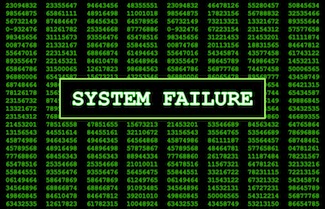How to conduct financial due diligence
Frequently asked questions about the financial side of due diligence during mergers and acquisitions.
Jump to:
Does the idea of working for a mergers and acquisitions (M&A) consulting firm pique your interest? If so, now may be the right time to steer your career in that direction. One potential area for accountants to get involved in is financial due diligence.
What is financial due diligence?
In an M&A transaction, it is vital that all financial information and relevant facts be investigated and verified (i.e., revenues, profit, growth trends, working capital needed to run the target company, short and long-term debts of the acquisition target and the terms of the debt, income statements, balance sheets, etc.). This process is known as financial due diligence.
Prior to submitting a letter of intent, it is common for buyers to first conduct preliminary financial due diligence. The preliminary financial due diligence is generally limited in scope, examining, for instance, the most recent balance sheet, profit and loss statement, and statement of retained earnings.
Should the buyer decide to proceed, the letter of intent is then submitted to the seller for signing. Once signed, a more thorough due diligence process is set in motion.
Conducting a thorough study of the target company is critical to the success of an M&A transaction, as it helps investors and companies better understand the nature of the deal and identify the risks involved.
More specifically, there are several reasons for conducting due diligence:
- Help avoid a bad business deal by identifying any potential issues.
- Obtain data that would be useful in valuing the deal.
- Ensure the accuracy of the information gathered for the deal.
- Make sure that the deal complies with all criteria.
How long does financial due diligence take?
The duration, as well as the cost of due diligence, depends heavily on the complexity of the acquisition target’s business and records.
For instance, the average small business due diligence period is roughly 45 to 60 days. Of course, a larger, more complex deal could easily take longer. For example, due diligence for a private equity group or strategic buyer of a similarly sized business usually last 60 to 180 days.
As noted earlier, preliminary due diligence essentially starts the moment a buyer eyes an acquisition opportunity. That being said, the official start of due diligence is upon the signing of a letter of intent to buy a company and the signing of a confidentiality agreement. Once these two key documents are signed, due diligence work officially begins.
Buy-side versus sell-side
There are two sides to every story and the same holds true for due diligence in M&A transactions. There is due diligence from the buyer’s perspective and due diligence from the seller’s perspective. What’s the difference?
Buyer’s perspective: From the buyer’s perspective, hiring outside counsel and M&A professionals to conduct financial due diligence helps ensure that all financial information and relevant facts pertaining to the deal have been verified and are accurate. This significantly reduces the risks for the buyer.
Seller’s perspective: While due diligence is often thought of from a buyer’s standpoint, the seller can also benefit from due diligence. For instance, the due diligence process may reveal that the fair market value of the seller’s company is actually greater than initially anticipated. In fact, before striking a potential deal, a seller may prepare their own due diligence report.
How to conduct financial due diligence
Conducting financial due diligence can be broken down into four main stages: preparation, research, verification, and analysis. Let’s further explore each phase.
-
Preparation
It is important to first ensure that the acquisition target is viable for a potential deal. Factors to consider include: Is the company a strategic fit for the buyer? Does the company meet the desired criteria? A due diligence team of financial and legal professionals, as well as internal specialists, if necessary, must then be assembled, and a due diligence checklist needs to be prepared.
Preparing a checklist helps drive the efficiency and speed of M&A deals. The checklist should begin with the buyer’s basic requirements and expand to include specifics related to the transaction. To prepare a checklist some things you must know:
- What the due diligence will entail
- Timeframe
- Documents and data needed (i.e., financial statements, historical performance, debts, etc.)
- Core players in the process
-
Research
With the checklist complete, the investigation of financial statements, balance sheets, SEC filings, annual reports, etc., can begin. During this phase, representatives of the buyer will take a closer look at the company’s management, speak with decision-makers and key stakeholders, and, if necessary, engage third-party auditors.
-
Verification
When the research phase is complete, it is critical to then verify all of the information. Do the findings correlate with the data presented by the acquisition target? Are there any questions or concerns? Are there additional requirements that need to be met?
-
Analysis
It is now time to analyze all of the information and come to a final decision. During the analysis phase, the buyer side will prepare the financial due diligence report outlining a summary of the results, any recommendations, issues that may have been uncovered during the due diligence process, etc.
Due diligence versus audit
While due diligence and an audit may overlap, there are several notable differences between the two processes.
- In general, due diligence is the process a buyer uses to gain a clear, holistic view of the target company (i.e., potential synergies, weaknesses, and strengths). An audit, on the other hand, is a systematic, independent examination of a company’s financial records to ensure accuracy.
- Due diligence is recommended, while audits are typically required.
- Due diligence is customized around a buyer’s objective. Audits must follow a standard process.
- Due diligence examines a longer time period (typically two to three years) compared with an audit, which examines one year.
Exploring career paths in M&A
Following a two-year stagnation in deals, the M&A world is enjoying a dose of optimism as deal volume is likely to increase in the coming months. And, as a result, many M&A leaders are looking to hire more talent.
Financial due diligence is a critical process in M&As, serving as a comprehensive assessment of a company’s financial health. For accountants considering a career in M&A, conducting due diligence requires a keen eye for detail, but also offers opportunities to play a pivotal role in shaping successful business outcomes.
Learn more about how adding on M&A advisory services to your firm can be a rewarding career move for today’s accounting professionals.






